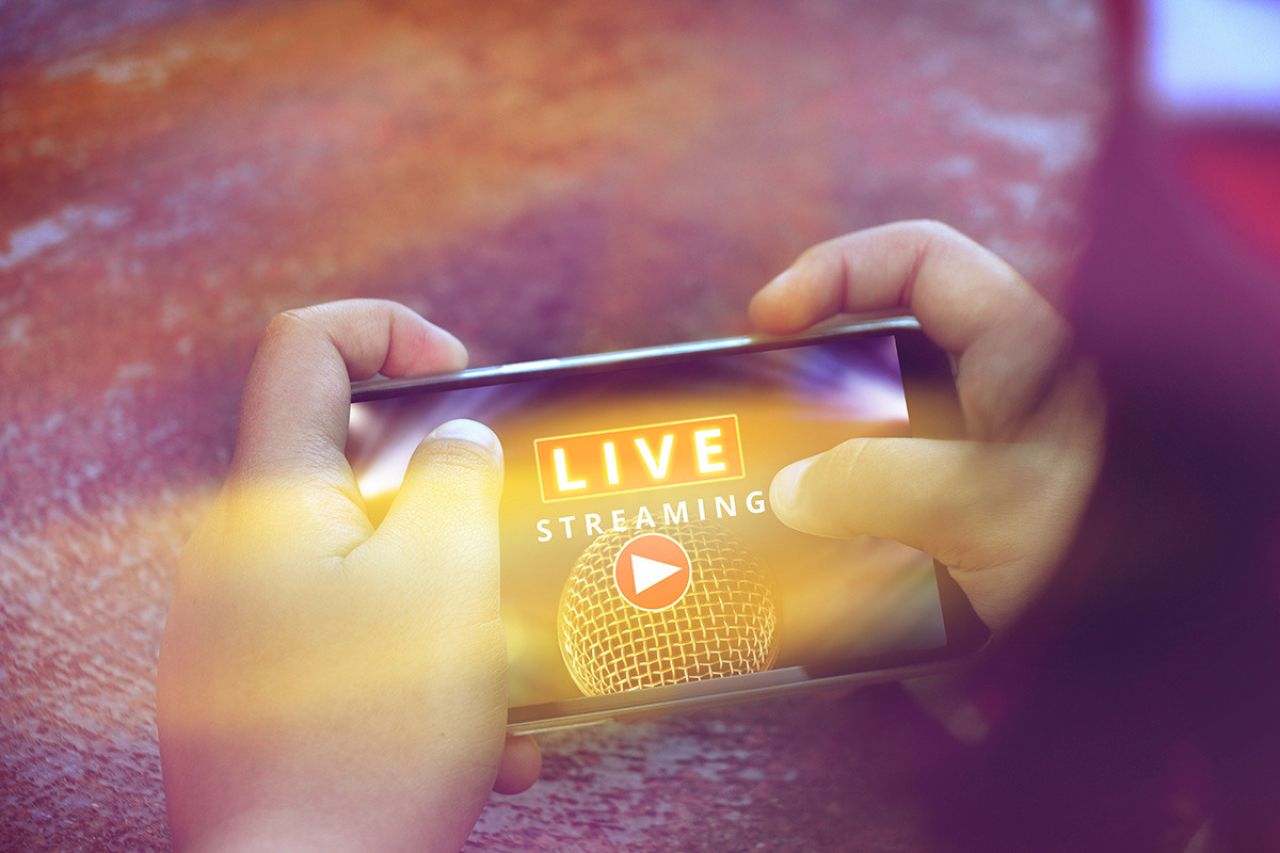February 21, 2025
Streaming the News

News Experiments are (Nearly) Everywhere in the Streaming Landscape
In an announcement underlining its victory in the streaming arms race, Netflix recently reported that its worldwide subscriber base has surpassed 300 million. The letter to shareholders celebrated Netflix’s new successes with live sporting events like the Jake Paul-Mike Tyson fight and NFL Christmas Day games alongside its popular film and television titles. Notably missing from Netflix’s experiments? News programming.
The dearth of news on Netflix is just one, if large, sign of news’ tenuous position in the streaming ecosystem. More Americans avoid the conventional cable bundle each year. Alternative access points to live television—via “over-the-top” (OTT) services like YouTube TV or digital antennas—don’t make up the difference in cable subscription declines. Recent Pew surveys indicate that American adults prefer getting their news on a digital device (58%) rather than a television (32%); the difference in preference is much more pronounced among adults 18–29 (86% for device, 8% for television). Americans (especially younger folks) increasingly rely on “news influencers” on YouTube, social media, and podcasts to be informed. These influencers are rarely affiliated with news organizations.
Broadcasters’ Streaming Experiments
Broadcasters haven’t resigned themselves to failure in the streaming realm, however. ABC, CBS, and NBC offer free, ad-supported 24/7 news products across their respective websites, YouTube channels, and streaming apps. Content-wise, these productions fall somewhere between what we see on broadcast and cable television. The approach is more straightforward than the fizzier morning news franchises, less antagonistic than the argumentative cable formats, and a bit younger in presentation and perspective than the venerable primetime news broadcasts. Rather than fill the time with mindless debate panels, these streaming options replay key segments throughout the day. On average, they produce 8-12 hours of original news coverage.
To some extent, these streaming newscasts are experimental loss leaders. At any given time of the day, a few thousand people are streaming news coverage from one of these channels. NBCUniversal consistently touts the growth of NBC News NOW, but public data suggests the streaming product attracts a comparable number of viewers in a month (34–40 million) that the NBC Nightly News pulls in about a week on television.
Of course, these streaming channels are part of a much broader effort to meet audiences where they are. Broadcasters have committed more resources to YouTube, including uploading full episodes of their premier news shows. ABC World News Tonight with David Muir, the most popular evening newscast on TV, gains another 500,000–900,000 daily viewers from YouTube. Broadcasters also find some success on YouTube with investigative packages, often labeled as documentaries, because the platform’s algorithm structures currently incentivize longer videos. For instance, a recent 22-minute CBS investigation on processed foods has nearly half-a-million views. Growth is visible on TikTok, too. NBC News reported 1.4 billion views in Q4 2024 alone. Multiple uploads have surpassed a million views this week.
The Uncertainty of Multiplatform News
For the news organizations, the multiplatform approach has its benefits. Broadcasters can easily repackage coverage for different audiences. A breaking news segment on ABC News Live becomes a separate YouTube video, TikTok, and Instagram Reel. Advertising partners can buy time on broadcast television, the 24/7 streaming channel, or both.
However, it’s unclear if the free, ad-supported, and social approach will align with corporate interests as executives seek to profit more from subscription streaming services. Eventually, Comcast wants Peacock to make money rather than lose hundreds of millions each quarter. At what point does the news “content vertical” fall exclusively behind a subscription paywall? And if that fails, like the botched CNN+ experiment, do companies cut back on their news divisions altogether?
Similarly, corporate attempts to reach people on digital platforms increasingly run up against the aforementioned news influencers. Every video uploaded to YouTube by Joe Rogan gets more views—and has a longer tail—than what ABC, CBS, and NBC posts. Conventional broadcasters are figuring out how to attract audiences on YouTube and TikTok, but younger folks still prioritize the authenticity of native creators over what they perceive as formulaic TV news production.
For citizens, paywalls aren’t the only hurdle to acquiring quality information in the streaming environment. OTT services like YouTube TV regularly tussle with media conglomerates over retransmission license fees, which can black out local and national news coverage for weeks. Many local news outlets provide news through a dedicated app on popular streaming devices like Roku and Amazon Fire Stick, but the quality can vary significantly by station. Government attacks on public broadcasting loom over potential efforts to shift PBS to even more of a direct-to-consumer subscription model, especially at the scale necessary to survive.
Ultimately, news is everywhere but on Netflix in the streaming environment. The issue, though, is a familiar one: Americans will continue to consume news in a deeply fragmented and personalized manner. –CB

